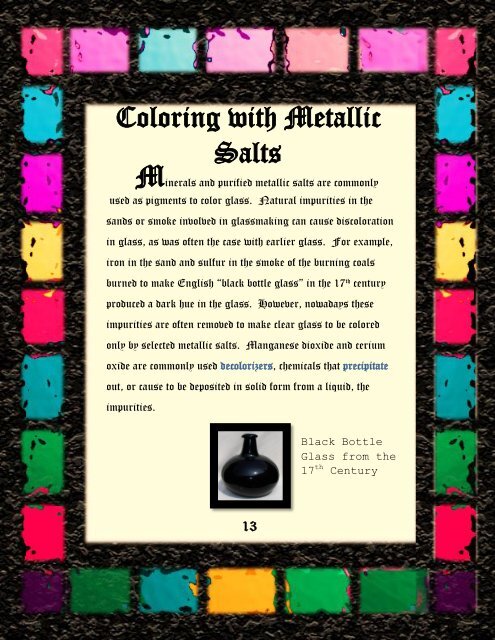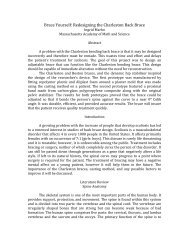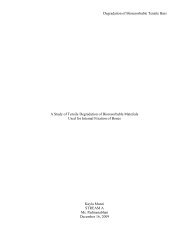Glasswork - the Scientia Review
Glasswork - the Scientia Review
Glasswork - the Scientia Review
You also want an ePaper? Increase the reach of your titles
YUMPU automatically turns print PDFs into web optimized ePapers that Google loves.
Coloring with Metallic<br />
Salts<br />
Minerals and purified metallic salts are commonly<br />
used as pigments to color glass. Natural impurities in <strong>the</strong><br />
sands or smoke involved in glassmaking can cause discoloration<br />
in glass, as was often <strong>the</strong> case with earlier glass. For example,<br />
iron in <strong>the</strong> sand and sulfur in <strong>the</strong> smoke of <strong>the</strong> burning coals<br />
burned to make English “black bottle glass” in <strong>the</strong> 17 th century<br />
produced a dark hue in <strong>the</strong> glass. However, nowadays <strong>the</strong>se<br />
impurities are often removed to make clear glass to be colored<br />
only by selected metallic salts. Manganese dioxide and cerium<br />
oxide are commonly used decolorizers, chemicals that precipitate<br />
out, or cause to be deposited in solid form from a liquid, <strong>the</strong><br />
impurities.<br />
Black Bottle<br />
Glass from <strong>the</strong><br />
17 th Century<br />
13

















